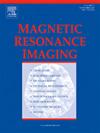Deformable image registration with strategic integration pyramid framework for brain MRI
IF 2
4区 医学
Q2 RADIOLOGY, NUCLEAR MEDICINE & MEDICAL IMAGING
引用次数: 0
Abstract
Medical image registration plays a crucial role in medical imaging, with a wide range of clinical applications. In this context, brain MRI registration is commonly used in clinical practice for accurate diagnosis and treatment planning. In recent years, deep learning-based deformable registration methods have achieved remarkable results. However, existing methods have not been flexible and efficient in handling the feature relationships of anatomical structures at different levels when dealing with large deformations. To address this limitation, we propose a novel strategic integration registration network based on the pyramid structure. Our strategy mainly includes two aspects of integration: fusion of features at different scales, and integration of different neural network structures. Specifically, we design a CNN encoder and a Transformer decoder to efficiently extract and enhance both global and local features. Moreover, to overcome the error accumulation issue inherent in pyramid structures, we introduce progressive optimization iterations at the lowest scale for deformation field generation. This approach more efficiently handles the spatial relationships of images while improving accuracy. We conduct extensive evaluations across multiple brain MRI datasets, and experimental results show that our method outperforms other deep learning-based methods in terms of registration accuracy and robustness.
基于策略整合金字塔框架的脑MRI可变形图像配准。
医学影像配准在医学成像中起着至关重要的作用,并有着广泛的临床应用。在这种情况下,脑部核磁共振成像配准通常用于临床实践中的精确诊断和治疗规划。近年来,基于深度学习的可变形配准方法取得了显著成效。然而,在处理大变形时,现有方法在处理不同层次解剖结构的特征关系时不够灵活高效。针对这一局限,我们提出了一种基于金字塔结构的新型战略整合配准网络。我们的策略主要包括两个方面的整合:不同尺度特征的融合和不同神经网络结构的整合。具体来说,我们设计了一个 CNN 编码器和一个 Transformer 解码器,以有效地提取和增强全局和局部特征。此外,为了克服金字塔结构固有的误差累积问题,我们在变形场生成的最低尺度上引入了渐进式优化迭代。这种方法能更有效地处理图像的空间关系,同时提高准确性。我们在多个脑磁共振成像数据集上进行了广泛的评估,实验结果表明,我们的方法在配准精度和鲁棒性方面优于其他基于深度学习的方法。
本文章由计算机程序翻译,如有差异,请以英文原文为准。
求助全文
约1分钟内获得全文
求助全文
来源期刊

Magnetic resonance imaging
医学-核医学
CiteScore
4.70
自引率
4.00%
发文量
194
审稿时长
83 days
期刊介绍:
Magnetic Resonance Imaging (MRI) is the first international multidisciplinary journal encompassing physical, life, and clinical science investigations as they relate to the development and use of magnetic resonance imaging. MRI is dedicated to both basic research, technological innovation and applications, providing a single forum for communication among radiologists, physicists, chemists, biochemists, biologists, engineers, internists, pathologists, physiologists, computer scientists, and mathematicians.
 求助内容:
求助内容: 应助结果提醒方式:
应助结果提醒方式:


